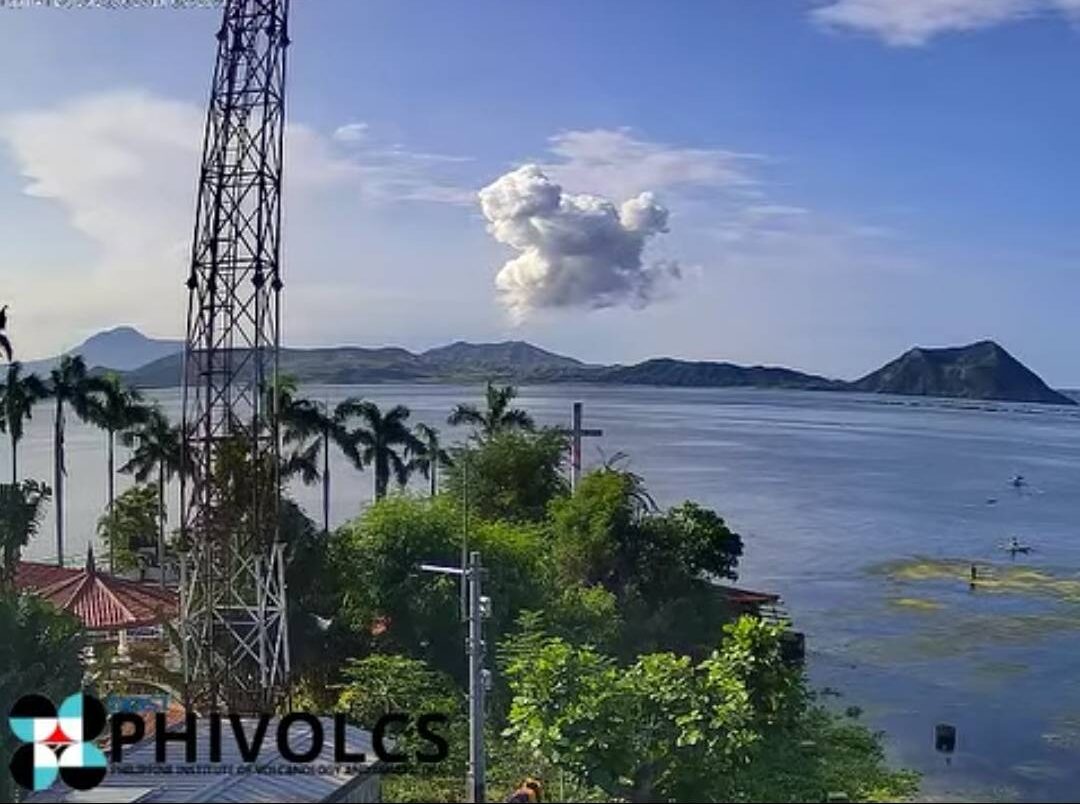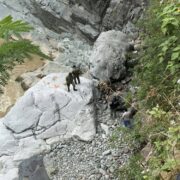Taal Volcano records 2 steam-driven eruptions

LUCENA CITY—Taal Volcano in Batangas province recorded two minor phreatic, or steam-driven, eruptions on Saturday and Sunday, according to the Philippine Institute of Volcanology and Seismology (Phivolcs).
In its latest bulletin, Phivolcs said the most recent phreatic eruption, occurred from 8:20 to 8:24 a.m. on Sunday. The event produced a 900-meter-high plume that drifted westward.
On Saturday, the volcano also showed another minor phreatic eruption at 9:42 to 9:46 p.m. The eruption was accompanied by three volcanic tremors lasting four to 12 minutes.
A phreatic eruption is a “steam-driven explosion that occurs when water beneath the ground or on the surface is heated by magma, lava, hot rocks, or new volcanic deposits (for example, tephra and pyroclastic-flow deposits),” Phivolcs said.
The unrest, however, is unlikely to progress into a magmatic eruption based on the background levels of volcanic earthquake activity and the detected ground deformation, Phivolcs pointed out.
Taal Volcano is still under alert level 1 (low level of volcanic unrest), Phivolcs said.
The agency reminded the public that Taal Volcano remained in an “abnormal condition” and “should not be interpreted to have ceased unrest nor ceased the threat of eruptive activity.”
‘Weak emission’
In its Sunday bulletin, Phivolcs also recorded a “weak emission” of only 407 metric tons of sulfur dioxide from Taal’s main crater.
There were no reports of upwelling hot volcanic fluids in the main crater lake of Taal Volcano Island, which sits in the middle of Taal Lake.
No volcanic smog, or “vog,” was also observed during the latest monitoring period.
On Feb. 12, the volcano also logged a minor phreatic eruption that lasted three minutes. At least 12 volcanic earthquakes were also detected.
The series of quakes were accompanied by 11 volcanic tremors.
Phivolcs defines volcanic earthquakes as those “generated by magmatic processes or magma-related processes beneath or near an active volcano.”
Volcanic tremors, on the other hand, are “continuous seismic signals with regular or irregular oscillations and low frequencies (typically 0.5–5 Hz) that can last for more than a minute.”

















